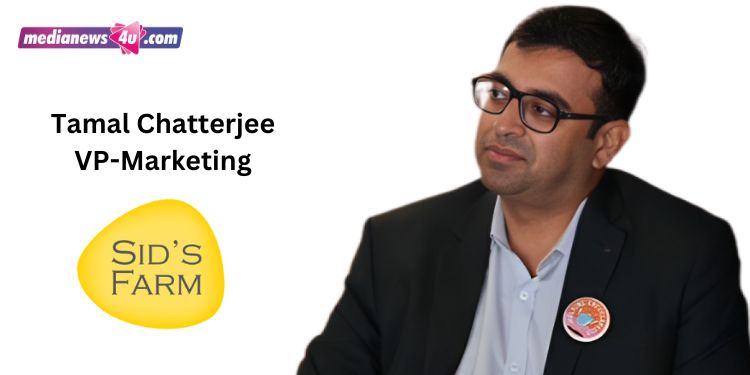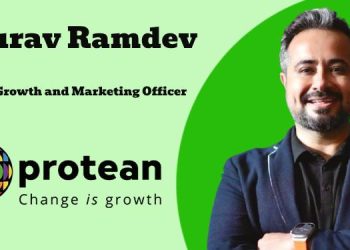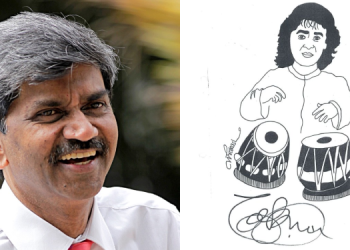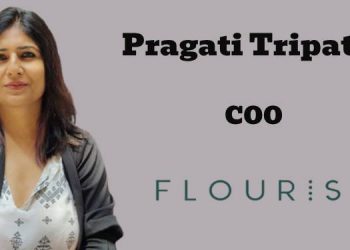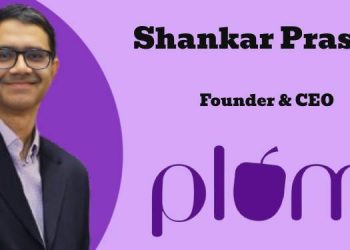Sid’s Farm, a premium dairy brand based in Telangana, was established in the year 2016 by Dr. Kishore Indukuri, an IIT Kharagpur and University of Massachusetts alumnus. The objective of the brand was to provide pure, healthy, adulterant-free milk and milk products. Its product range includes milk, butter, ghee, curd and paneer. Currently, the company serves over 20,000 customers daily on a subscription model.
The venture which started with 20 cows and a single product has expanded to 17 products and is planning to further diversify its portfolio. The brand’s farm is located in Hyderabad. It is planning to set up a farm in Bengaluru in a month, reveals Tamal Chatterjee, VP-Marketing at Sid’s Farm.
The company turnover was Rs.44 cr in 2020-’21 and it increased to Rs.64.5 cr the next year.
“In 2022-’23, we closed at about Rs.87 cr. For the financial year 2023-’24, we will close anywhere between Rs.120 and 130 cr,” reveals Chatterjee.
At present, 80 pc of the brand’s revenue comes from milk and the rest from value-added dairy products. Within milk, buffalo milk contributes to 55 to 60 pc with cow milk accounting for the rest.
Recalling the evolution of the brand, Chatterjee recalled that the founder wanted to get into agriculture but wasn’t sure whether one could make a brand out of it.
One good thing that happened with the brand, according to Chatterjee, is that it tried to remain true to its core values of being transparent with customers and never deviating from the purity aspect.
“Hence, the customers tend to be very loyal to us. They also realised that the kind of quality we provide in our products is unparalleled. As part of the transparency, every Saturday we allow farm visits for customers. We have observed that customers take a lot of pride in associating with us. Despite all the efforts in digital marketing or BTL that yield results, there is a large chunk of customers who come in via referrals. There are customers who try our brand and eventually become the spokespersons for the brand. That’s how we have grown over these years,” he adds.
Product Expansion
Right from the start, the brand focused on segregation of products.
“The cities like Bengaluru and Hyderabad have a mix of cosmopolitan inhabitants. There are people from several parts of the country. Culturally we have grown up drinking different kinds of milk, either cow’s or buffalo’s, hence we knew that we need to segregate the products. We have products like cow and buffalo milk, buffalo and cow ghee etc. We focused on segregation of the products because consumption patterns are different. For example, people from Haryana prefer buffalo milk. We have expanded to about 17 products over these eight years,” notes Chatterjee.
After milk, the brand forayed into curd and paneer.
“Since we were also producing a lot of skimmed milk, there came a situation where it had to be converted to ghee. Hence that was also launched. It was all a natural progression for us. From the very beginning we realised that we are a niche where we are charging at least a 40 pc premium compared to the regular brands available in the market,” he adds.
Expansion Plans
Due to that reason, Chatterjee says that the brand may not be able to venture into the smallest cities or towns and has to restrict itself to metros, or at the most tier 1 cities.
For now, Sid’s farm is trying to fortify its presence in Bengaluru.
“We have been thinking for a while to expand to other cities in Andhra Pradesh and Telangana like Vizag, Vijayawada and Warangal. When we are comfortable with Hyderabad and Bengaluru, we would want to diversify to the West – particularly Mumbai and Pune, sometime next year,” reveals Chatterjee.

The brand also has plans to expand its products list. It recently launched a dessert range with Doodh Peda. The brand wanted to get into healthy desserts without preservatives. Because of which, the Doodh Peda’s shelf life is seven days.
“We want to make something that would be healthy as well as attractive to children. Desserts in jars are what we are exploring. It is in a very nascent stage though. We are also looking at a few variants of paneer, possibly. In terms of breakfast, we are trying to see if curd and some sort of cereal like granola can be a good combination,” adds the spokesperson.
Marketing Efforts
Chatterjee underlines that Sid’s Farm is focused on raising awareness rather than aggressive sales tactics.
“If you look at the overall tonality of the brand, it will not be about offers. As part of marketing tactics, we do that. But overall, it is about raising awareness about the right kind of milk – how it is procured, the quality and the kind of tests done to ensure that. These are things we drive along with call to action where we encourage consumers to download the app, etc. The main focus is not pushing our sales or driving subscription,” he explains.
He also does not want to bucket target customers into a certain profile, because despite its premium, the brand believes it is affordable for many once they understand the value proposition.
“With milk as a product, the inherent perceived value is very low. What we have been doing over these years was increasing awareness. If I am talking about buffalo milk which costs Rs.120 per litre, a family spends Rs.3,600 for a litre of milk a day in a month. This is more or less the same as what is spent on dining out with your family once. The cost is not very high. It is just the approach to it and whether people have seen the value. For that, the customer has to be inquisitive. We have a property called Milkology, where school children come to our farm for a visit and we go to schools for talks. These activities are not done not specifically for Sid’s Farm, it is essentially focused on why we have to question the food that we are consuming. Do they contain chemical elements which will be harmful for you in the long run? We are also trying to build a community of spokespersons in the school who would champion this cause,” he notes.
In terms of the marketing spends, Sid’s Farm is trying to remain as frugal as possible, Chatterjee says. Its performance marketing metrics too are very stringent.
“We don’t spend too much money on various mediums. ATL is a big no for us right now. BTL we cannot do without and we see better conversion there, so we will continue doing that. Our biggest spends are on digital. Of my total spends today roughly about 50 pc is on digital. The remaining goes to BTL activities,” he adds.
Subscription Vs Retail
Though the brand has a retail presence which was started a couple of years back, it never wanted to get into the traditional distribution model and its direct stores deliver to homes.
“We had to limit ourselves because of the price points, hence the brand is not present in local-mom-and-pop stores. In Hyderabad, Sid’s Farm products are available in retail chains like Ratnadeep, Vijetha, Polimeraas, Reliance Smart etc. In Bengaluru, we have stopped the retail expansion because we are ramping the team up. But the products are available in Nature’s Basket and few Reliance Smart outlets,” adds Chatterjee.
In terms of revenue, D2C is the biggest contributor and according to the spokesperson, the company wants it to remain that way. Around 65 pc comes from the D2C channel (its own app), 20 pc comes from the e-comm/quick commerce apps and another 15 pc from retail.
Sid’s Farm has recently onboarded on the ONDC platform which has benefitted the brand.
“The response is good. ONDC is in the process of learning and so are we. We are kind of growing together. We kept getting orders from the North-Eastern part of our country. Also, we get orders from borderline areas of Gujarat, Kashmir etc. People are looking us up. As a marketer it feels good when you have customers in far reaching areas and they are willing to try our brand,” he concludes.
(First published by The Free Press Journal BrandSutra. Content powered by MediaNews4u.com. Feedback: [email protected])

